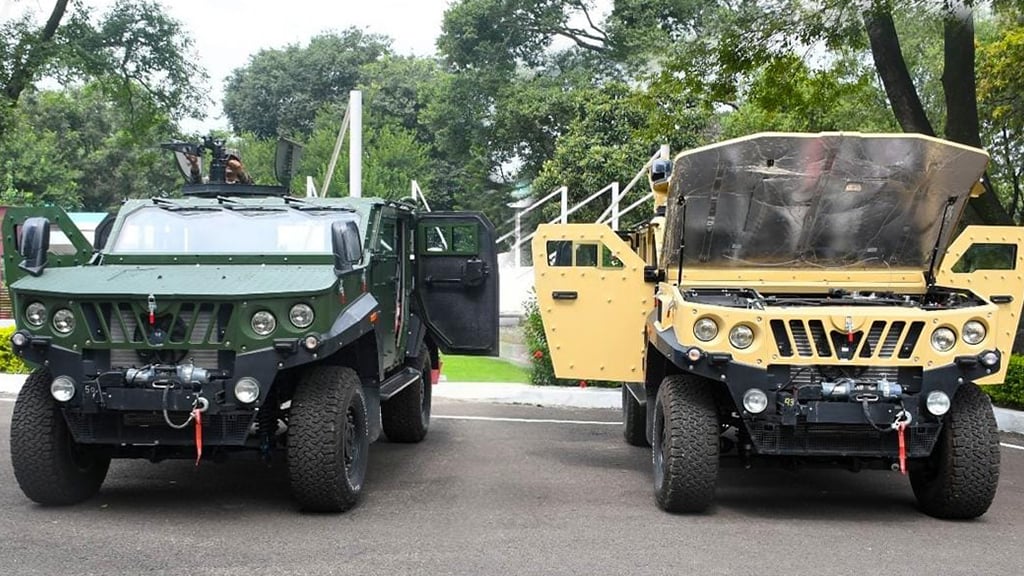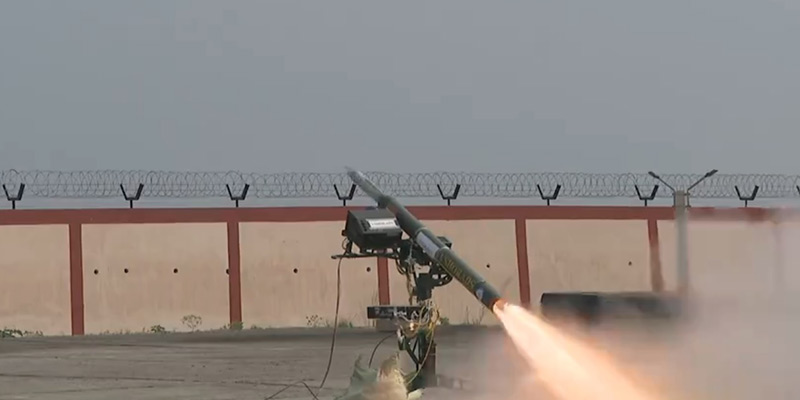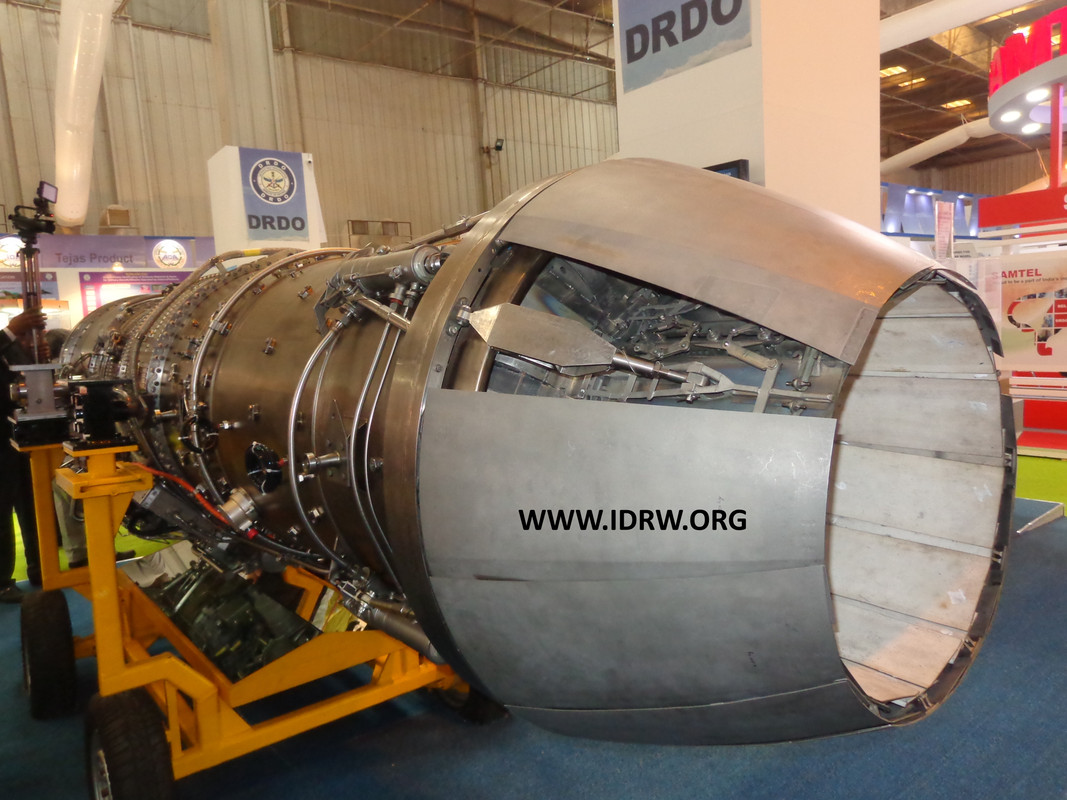Idrw Team
SOURCE: RAUNAK KUNDE / NEWS BEAT / IDRW.ORG


The Indian Ministry of Defence (MoD) is on the verge of approving a massive ?25,000 crore order for the Quick Reaction Surface-to-Air Missile (QRSAM) system, developed by the Defence Research and Development Organisation (DRDO), according to idrw.org sources. This significant procurement, following the completion of Limited Series Production (LSP) unit deliveries in FY 2024-25, aims to enhance the Indian Air Force’s (IAF) ability to counter aerial threats, particularly in light of recent escalations along the Indo-Pak border. However, while the order signals a push for indigenous defense solutions, it also raises questions about the system’s readiness and the IAF’s broader air defense strategy.
The QRSAM, designed to provide 360-degree air defense coverage, is a mobile system mounted on an Ashok Leyland 8×8 truck, capable of intercepting aircraft, drones, and cruise missiles within a 30 km range and up to 10 km altitude. Developed by DRDO in collaboration with Bharat Electronics Limited (BEL) and Bharat Dynamics Limited (BDL), the QRSAM features a single-stage, solid-propellant missile with a mid-course inertial navigation system, a two-way data link, and a terminal active radar seeker developed by Research Centre Imarat.
Continue readingSOURCE: IDRW.ORG


In a significant push to enhance the electronic warfare (EW) capabilities of its unmanned aerial vehicles (UAVs), the Defence Research and Development Organisation (DRDO) has issued a Request for Proposal (RFP) for the development of Radar Warning Receiver and Jammer (RWJ) radomes.
Released in early 2025 by the Centre for Airborne Systems (CABS), this RFP invites Indian industrial partners to design and produce lightweight radomes that house RWJ systems, critical for detecting and countering enemy radar threats. With stringent operational specifications and a focus on indigenous innovation, this move underscores India’s ambition to bolster its UAV fleet for modern combat scenarios.
Continue readingSOURCE: IDRW.ORG


As the Indian Air Force (IAF) grapples with a critical shortfall in fighter squadrons and evaluates options for its Multi-Role Fighter Aircraft (MRFA) tender, Russia’s Sukhoi Su-57 stealth fighter is emerging as a compelling contender. Recent developments in Russia’s production capacity and engine technology, coupled with a robust offer for co-production in India, position the Su-57E as a viable interim solution to bridge the gap until India’s indigenous Advanced Medium Combat Aircraft (AMCA) enters service in the mid-2030s.
However, challenges related to engine readiness, payment mechanisms, and potential sanctions under the US’s Countering America’s Adversaries Through Sanctions Act (CAATSA) could complicate this opportunity, raising questions about the Su-57’s fit for India’s fifth-generation fighter requirements.
Continue readingSOURCE: IDRW.ORG


Ministry of Defence (MoD), Government of India, issued a Request for Information (RFI) to procure a significant number of Light Specialist Vehicles (LSVs) for the Indian Armed Forces, particularly the Indian Army.
The RFI, aimed at both domestic and international Original Equipment Manufacturers (OEMs) and vendors, outlines the Indian Army’s need for LSVs to support deployment along Northern Borders, particularly in high-altitude areas like Ladakh, where tensions with both Pakistan and China remain high. The document is structured in three parts: operational and technical requirements, vendor selection criteria, and response methodology.
Continue readingSOURCE: IDRW.ORG


In a significant push toward self-reliance in defense manufacturing, the Ministry of Defence (MoD) has issued a Request for Proposal (RFP) to procure 48 launchers, 48 night vision sights, 85 missiles, and one missile test station for the Very Short Range Air Defence System (New Generation) [VSHORADS-NG] under the “Buy (Indian)” category. This acquisition, aimed at enhancing the Indian Army’s air defense capabilities, underscores India’s commitment to the Atmanirbhar Bharat initiative, prioritizing indigenously designed, developed, and manufactured systems.
The VSHORADS-NG, developed by the Defence Research and Development Organisation (DRDO) in collaboration with Indian industry partners like Adani Defence & Aerospace and ICOMM Tele Limited, is a fourth-generation MANPADS designed to neutralize drones, helicopters, and low-flying aircraft. The system, an evolution of the DRDO’s VSHORADS tested successfully in 2022-2024, features advanced infrared (IR) homing, miniaturized reaction control systems, and integrated avionics, offering a range of 250 meters to 6 kilometers and a speed of Mach 1.5. Its portability—either shoulder-launched or tripod-mounted—ensures flexibility for troops in diverse terrains, from high-altitude borders to coastal regions.
Continue readingSOURCE: IDRW.ORG


In a significant step towards bolstering India’s self-reliance in defense technology, the Defence Research and Development Organisation (DRDO) has handed over Transfer of Technology (ToT) agreements for two advanced communication systems. The L/S Band Digital Troposcatter Communication System technology was transferred to Bharat Electronics Limited (BEL), while the Compact Troposcatter Communication System technology was provided to HFCL Limited (HFCL). This move, announced on April 29, 2025, underscores DRDO’s commitment to fostering indigenous manufacturing capabilities through public-private partnerships.
Troposcatter communication systems are critical for long-range, beyond-line-of-sight communication, often used in military operations where traditional line-of-sight systems like satellite or microwave links are unavailable or impractical. The L/S Band Digital Troposcatter Communication System, now in BEL’s hands, leverages the L and S frequency bands to enable robust, high-capacity data transmission over long distances, even in challenging terrains. BEL, a leading defense electronics company, is well-positioned to integrate this technology into its production lines, enhancing the Indian armed forces’ communication infrastructure.
Continue readingSOURCE: IDRW.ORG


Since 2019, the Indian Air Force (IAF) has undertaken significant upgrades to its Su-30MKI fleet, integrating advanced beyond-visual-range air-to-air missiles (BVRAAMs) to counter the evolving capabilities of the Pakistan Air Force (PAF). The incorporation of the Israeli I-Derby ER, a short- to long-range missile with a full-sphere launch envelope including the aft hemisphere, and the indigenous Astra missile has brought the IAF’s air combat capabilities closer to parity with the PAF’s BVRAAM arsenal. These enhancements, driven by lessons from the 2019 Balakot skirmish, reflect India’s strategic push to bolster its aerial dominance amid regional tensions.
The February 27, 2019, aerial skirmish following India’s Balakot airstrike exposed critical gaps in the IAF’s air-to-air combat capabilities. During the engagement, PAF F-16s, armed with AIM-120 AMRAAMs (range approximately 100-120 km), forced IAF Su-30MKIs into defensive maneuvers, as the Russian R-77 BVRAAMs (range around 80 km) carried by the Su-30MKIs lacked the reach to effectively counter the PAF jets. The IAF’s Su-30MKIs successfully evaded multiple AMRAAMs but were unable to retaliate offensively due to the range disparity, highlighting the urgent need for longer-range, more capable BVRAAMs.
Continue readingSOURCE: IDRW.ORG


In a significant boost to India’s quest for self-reliance in aerospace technology, Defence Minister Rajnath Singh recently emphasized the urgent need for Indian-made jet engines to power the nation’s fighter jets and unmanned aerial vehicles (UAVs). Speaking at a defense industry conclave in New Delhi on April 30, 2025, Singh announced that the government will allocate additional funds to accelerate the development of the Kaveri engine program, a long-standing initiative led by the Gas Turbine Research Establishment (GTRE) under the Defence Research and Development Organisation (DRDO).
While Singh did not specify whether the funding will support the ongoing Kaveri Derivative Engine (KDE) program—intended to power a 13-ton stealth unmanned combat aerial vehicle (UCAV) named Ghatak—or the proposed Kaveri 2.0 engine targeting 90kN of thrust, his statement has sparked optimism about India’s aerospace ambitions.
Continue readingSOURCE: IDRW.ORG


In a significant step toward modernizing its infantry forces, India has successfully completed the firing trial of a crewless 30mm turret designed for the Futuristic Infantry Combat Vehicle (FICV). The FICV program, initiated by the Indian Army to replace its aging fleet of BMP-2 infantry combat vehicles, aims to deliver a next-generation platform capable of operating in diverse terrains, including high-altitude regions like Ladakh and the deserts of Rajasthan. The crewless 30mm turret, a key component of the FICV, is designed to provide enhanced firepower, situational awareness, and survivability while reducing risks to personnel.
The crewless design leverages remote operation technology, allowing the turret to be controlled from a protected compartment within the FICV or even from a remote command station. This reduces the crew’s exposure to direct threats, a critical advantage in modern warfare where anti-armor weapons and drones pose significant risks.
Continue readingSOURCE: IDRW.ORG


Anshuman Tripathi, a former adviser to the National Security Advisory Board (NSAB) and an international consultant in aerospace and defense, has urged India to adopt contemporary strategies to develop the 120kN engine for the Advanced Medium Combat Aircraft (AMCA). Speaking at a recent panel discussion, Tripathi emphasized the need to hire global talent and acquire existing technologies to shrink development timelines, drawing lessons from global examples and India’s own challenges.
Tripathi began with a poignant case study of Nokia, once a mobile phone giant that lost its edge to Apple’s iPhone. Quoting Nokia’s last CEO, Stephen Elop, who tearfully said, “We didn’t do anything wrong, but somehow we lost,” Tripathi drew parallels to India’s jet engine program. Despite earnest efforts by the Gas Turbine Research Establishment (GTRE) and others, India still lacks a viable indigenous jet engine. “Everybody put in their best, but we don’t have what we need,” he said, urging a shift in approach.
Continue readingSOURCE: IDRW.ORG


India is set to commence production of the F414 jet engine, developed by General Electric (GE), within the country by the end of 2025, according to Defence Secretary Rajesh Kumar Singh. Speaking at a defence conclave, Singh highlighted that negotiations with GE Aerospace for technology transfer and manufacturing are in advanced stages, with commercial discussions nearly finalized.
The F414 engine is critical for powering the indigenous Light Combat Aircraft (LCA) Mk2 and the fifth-generation Advanced Medium Combat Aircraft (AMCA), key components of India’s push for self-reliance in defence manufacturing. The manufacturing line will be established under a $1 billion deal signed in August 2023 between GE Aerospace and Hindustan Aeronautics Limited (HAL), which includes an 80% technology transfer for the engines.
Continue readingSOURCE: IDRW.ORG


In a landmark step toward strengthening India’s indigenous defense manufacturing, Caracal, a UAE-based small arms manufacturer under the EDGE Group, partnered with Hyderabad-based ICOMM Tele Limited to inaugurate a state-of-the-art small arms production facility in Hyderabad on April 22, 2025. This venture, aligning with India’s ‘Make in India’ and ‘Aatmanirbhar Bharat’ initiatives, aims to produce advanced firearms locally, reducing reliance on imports and enhancing India’s strategic autonomy.
The facility, a testament to growing UAE-India defense cooperation, is set to manufacture a comprehensive portfolio of Caracal’s small arms, including assault rifles, sniper rifles, and pistols, catering to the Indian armed forces and potentially regional markets. This development comes amid heightened regional tensions, including a recent terror attack in Jammu and Kashmir, underscoring the urgency of self-reliant defense capabilities.
Continue readingSOURCE: IDRW.ORG


The Aeronautical Development Agency (ADA) is spearheading an ambitious initiative to integrate advanced Sense and Avoid (SAA) or Detect and Avoid Systems (DAAS) into its Tapas and Archer-NG Medium Altitude Long Endurance (MALE) Unmanned Aerial Vehicles (UAVs). This cutting-edge technology aims to enable these UAVs to navigate safely in complex airspace, autonomously avoiding collisions with other aerial vehicles, birds, buildings, and other obstacles.
By incorporating a sophisticated multi-sensor data fusion processor and a combination of off-the-shelf and novel sensors, ADA is positioning India’s MALE UAVs to operate seamlessly in both controlled and uncontrolled airspace, enhancing their operational safety and versatility.
Continue readingSOURCE: IDRW.ORG


In a significant step toward India’s first private orbital rocket launch, Hyderabad-based Skyroot Aerospace announced on April 28, 2025, that the Composite Nozzle and Flex Nozzle Control (FNC) System for the Vikram-1 rocket’s Stage-1, named Kalam-1200, have successfully passed their pre-flight tests. This critical “steering system” for thrust vector control is now ready for integration with the motor, paving the way for an upcoming static fire test and the much-anticipated Vikram-1 launch.
The achievement, celebrated in posts on X by Skyroot’s CEO Pawan Chandana and the company’s official handle, underscores India’s growing prowess in private space exploration and positions Skyroot as a trailblazer in the global small-satellite launch market. Here’s a deep dive into this milestone, its technical significance, and what it means for Vikram-1’s journey to orbit.
Continue readingSOURCE: IDRW.ORG


In a notable development, the Pakistan Air Force (PAF) has reportedly relocated half of its advanced F-16 Block 52+ fighter fleet to Pasni Airfield, located in Gwadar on the northern Arabian Sea coast. The strategic repositioning is seen as a defensive measure aimed at keeping the aircraft outside the detection and engagement envelope of India’s S-400 Triumf air defence systems.
India’s deployment of the Russian-made S-400 system—widely regarded as one of the most capable air defence platforms in the world—has significantly altered the airpower dynamics in South Asia. With its extensive radar coverage and long-range interception capabilities, the S-400 can monitor and target hostile aircraft well beyond conventional airspace boundaries, creating a formidable anti-access/area-denial (A2/AD) bubble.
Continue reading